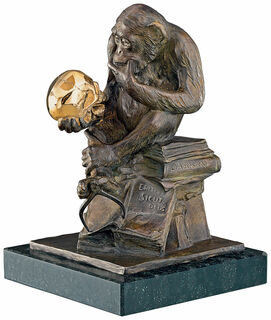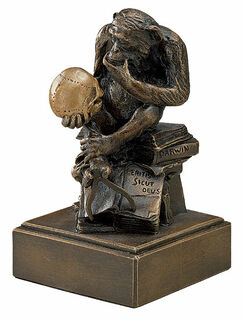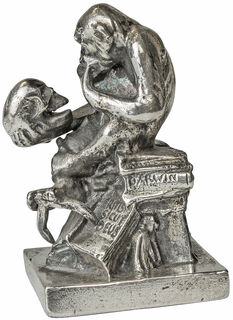Wolfgang Hugo Rheinhold
1853-1900
They have their fates – not only the books but also the works of art and artists. The fate of the "Ape with Skull" and its creator Wolfgang Hugo Rheinhold couldn’t be more different. Immediately after Rheinhold presented the sculpture at the Great Berlin Art Exhibition in 1893 as his final project for his studies at the Berlin Royal Academy of Fine Arts, the Berlin sculpture foundry Gladenbeck & Sohn offered to produce licensed casts. These went not only to private collectors but also to many international scientific institutions. They can still be admired today: In the Royal College of Surgeons in London, in the Medico-Chirurgical Society in Aberdeen, in the Boston Medical Library and the Department of Zoology at the University of Edinburgh. The most famous location is probably a Russian specimen: It adorned (and still adorns) Vladimir Ilyich Lenin's desk.
While the fame and notoriety of the sculpture grew unceasingly, Rheinhold was almost forgotten after his early death. It was only following an exhibition in Aberdeen in 1989 that serious biographical research began. Most of what has been gathered about Rheinhold since then has only been published in the last 15 years.
Rheinhold was not only a sculptor but also studied philosophy. Moreover, he was a co-founder of a "German Society for Ethical Culture". Perhaps this explains the dazzling richness of meaning of his "Ape". It not only represents a thoroughly humorous commentary on the Darwinism debate but at the same time appeals to the ethical responsibility of all science with the Genesis quote "Eritis sicut deus" ("You will be as God").



